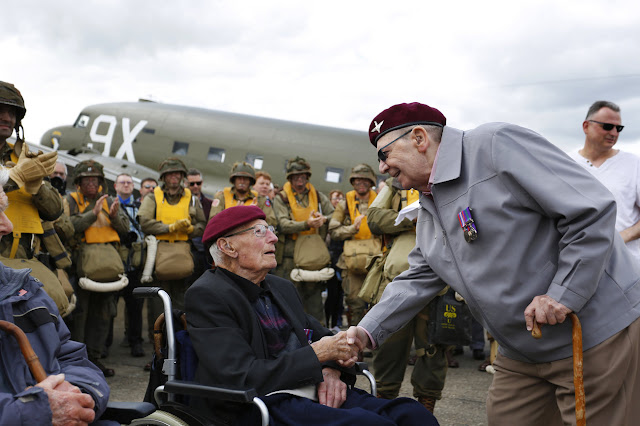Memorial Day: Time to remember and honor sacrifice
Wounded TimesKathie Costos
May 23, 2020
Memorial Day, may be considered as the kick off of summer and a time to enjoy our lives to some, but for others, it is a day to remember members of our families and friends no longer here physically. The memory of them remains.
My husband and I are both second generation Americans. Our grandparents came here from Greece, Italy, and Canada. They raised their children to value this county enough they would pay any price to defend it.
My husband's Dad and Uncles fought in WWII. He lost one of his uncles, who was a 19 year old Marine. Another uncle was a Merchant Marine and he was rescued when his ship was hit. He never really recovered but was able to live out his life along with other "shell shock" veterans on a farm. My husband and his nephew fought in Vietnam.
For my Dad, it was Korea and my uncles it was WWII.
Memorial Day means a lot more to us, while for others, a three day weekend to enjoy, or go shopping. It is not a time to think about what we want to do, but is a time to honor what they did, and what so many others did for the sake of all of us.
Today we are being asked to stay home as much as possible and in public, practice being distant from others while wearing a mask. We are asked to do this to protect others from what we may pass onto them with COVID-19 pandemic claiming so many lives. Fast approaching 100,000 deaths, it seems the least we can do.
Coronavirus live updates: New York eases restrictions on gatherings in time for Memorial Day weekend; US nears 100,000 deathsSome people protest about their rights to do what they want to do, without considering anyone else, even as the numbers continue to grow. Sad when considering all other generations were asked to do for the sake of others.
There will always be selfish people in this country and, God willing, there will always be those who put the lives of others above their own. This is for those who choose to honor and remember them!
This report provides war casualty statistics. It includes data tables containing the number of fatalities and the number of wounded among American military personnel who served in principal wars and combat actions from 1775 to the present. It also includes information such as race and ethnicity, gender, branch of service, and, in some cases, detailed information on types of casualties and causes of death. (read the report here)
Vietnam war deaths 1956-1975
The First and the Last
The first American soldier killed in the Vietnam War was Air Force T-Sgt. Richard B. Fitzgibbon Jr. He is listed by the U.S. Department of Defense as having a casualty date of June 8, 1956. His name was added to the Wall on Memorial Day 1999.
The first American soldier killed in the Vietnam War was Air Force T-Sgt. Richard B. Fitzgibbon Jr. He is listed by the U.S. Department of Defense as having a casualty date of June 8, 1956. His name was added to the Wall on Memorial Day 1999.
First battlefield fatality was Specialist 4 James T. Davis who was killed on December 22, 1961.
The last American soldier killed in the Vietnam War was Kelton Rena Turner, an 18-year old Marine. He was killed in action on May 15, 1975, two weeks after the evacuation of Saigon, in what became known as the Mayaguez incident.
Others list Gary L. Hall, Joseph N. Hargrove and Danny G. Marshall as the last to die in Vietnam. These three US Marines Corps veterans were mistakenly left behind on Koh Tang Island during the Mayaguez incident. They were last seen together but unfortunately to date, their fate is unknown. They are located on panel 1W, lines 130 - 131.
http://thewall-usa.com/names.asp
http://thewall-usa.com/names.asp
This is from 2010. The numbers are higher now and the debt we owe them has still not been paid yet.
John 15:13 King James Version (KJV) 13 Greater love hath no man than this, that a man lay down his life for his friends.























